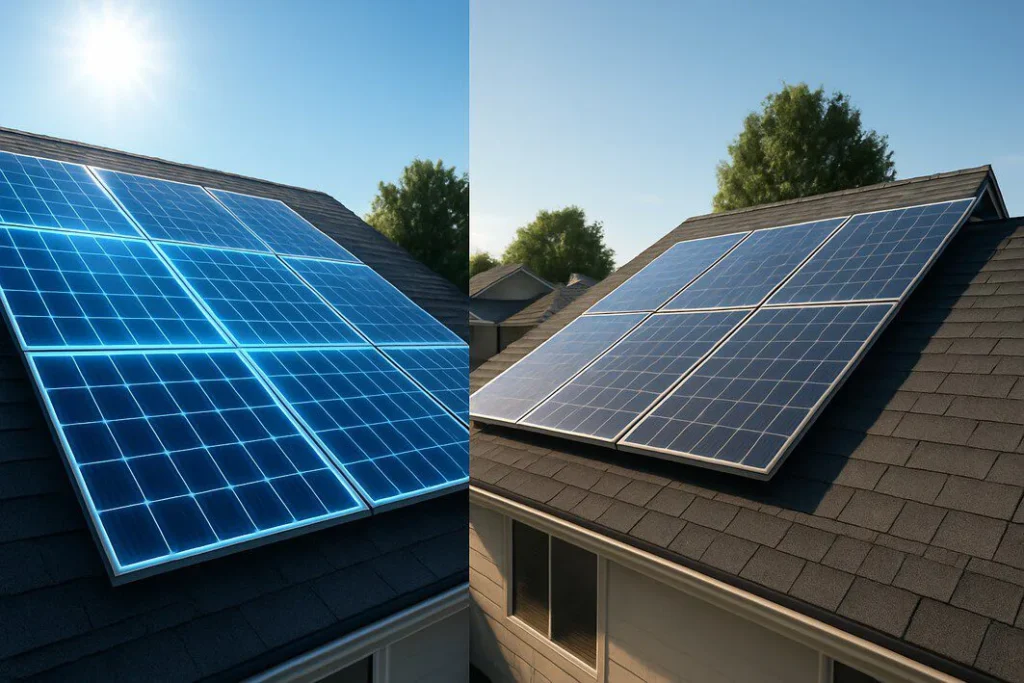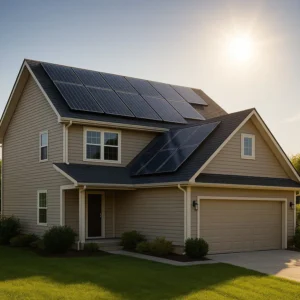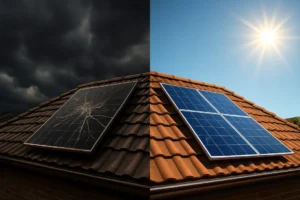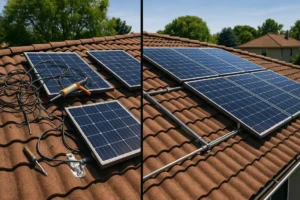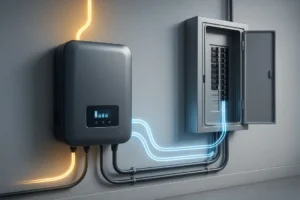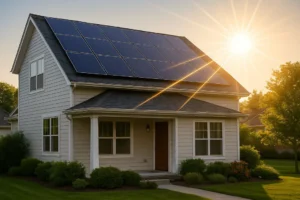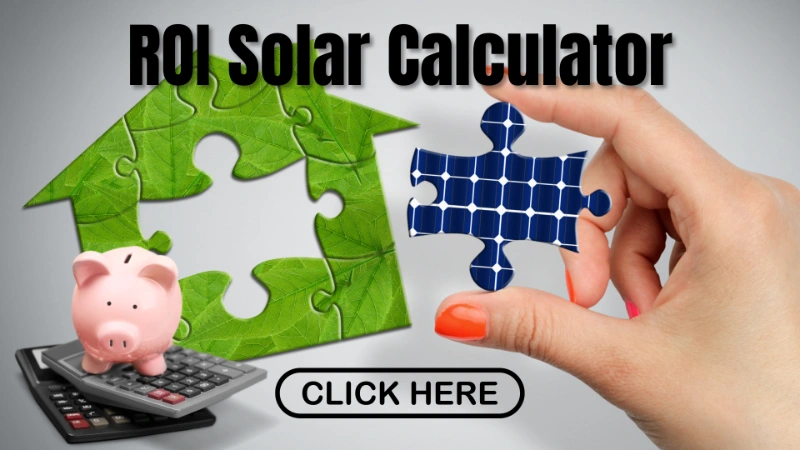If you’re exploring the world of residential solar, you’ve likely encountered various guidelines and best practices. Among these are several solar energy rules of thumb designed to simplify complex topics. One question we often see is, what is the 33% rule in solar panels?
Table of Contents
This rule is a quick way to estimate how much energy production you might lose if your solar panels can’t be installed in the ideal direction. While it’s a helpful starting point, understanding its nuances is key to making a smart investment. At RenewGenius, our goal is to provide a comprehensive solar knowledge base to help you move from estimation to certainty.
Decoding the Solar Panel 33% Rule
The solar panel 33% rule is a guideline that states:
A solar panel array facing directly east or west will produce approximately 33% less energy annually than an identical array facing true south (in the Northern Hemisphere).
In simpler terms, orientation matters—a lot. Solar panels generate the most electricity when sunlight hits them at a direct, perpendicular angle. Since the sun travels across the southern part of the sky, a south-facing roof provides the longest and most direct exposure throughout the day, maximizing energy capture. Panels facing east or west will miss the prime production hours of midday or the afternoon, respectively, leading to this estimated 33% reduction in overall output.
Putting the 33% Rule into Practice
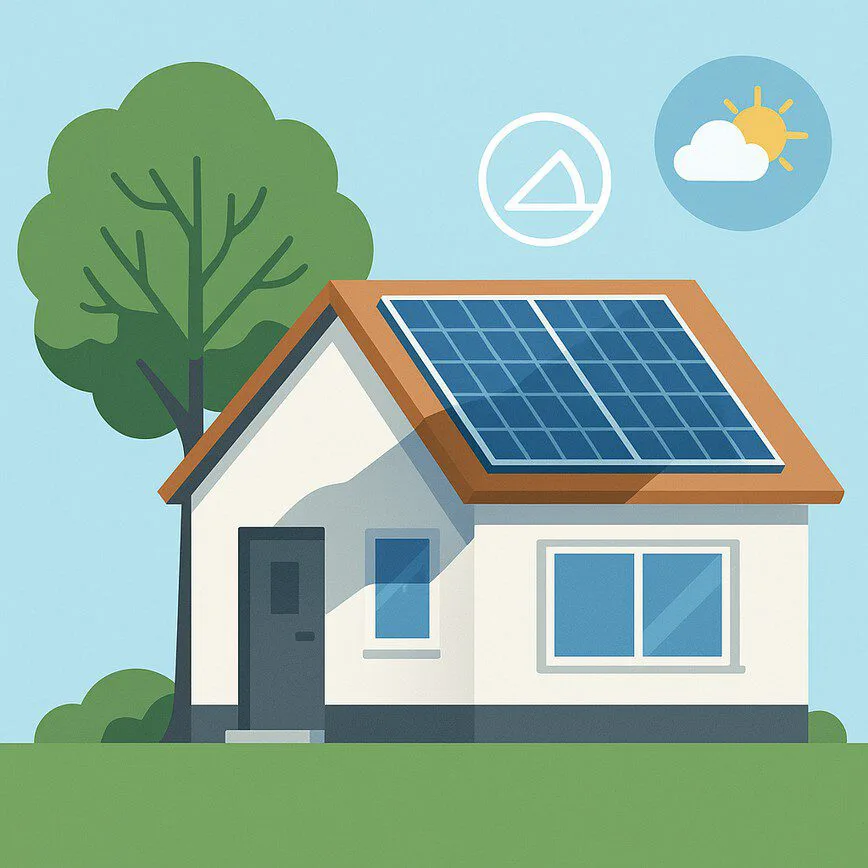
Let’s imagine an ideal, south-facing solar panel system in your area is projected to produce 10,000 kilowatt-hours (kWh) of electricity per year.
Using the 33% rule, you could estimate that if the same system were installed on an east-facing or west-facing roof, its annual production would be roughly:
- 10,000 kWh – (33% of 10,000 kWh) = 6,700 kWh
Is the 33% Rule Always Accurate?
No. It’s important to remember that this is a generalization. The actual efficiency loss can be more or less than 33% depending on several key factors:
- Roof Pitch (Tilt): The angle of your roof affects how directly the sun’s rays hit the panels. A steeper or shallower pitch can alter the production difference between southern and east/west orientations.
- Local Climate: Areas with frequent morning fog might see east-facing panels underperform more significantly, while regions with clear afternoons could make west-facing panels more viable.
- Shading: Trees or neighboring buildings that cast shadows during specific times of day can dramatically impact output, overriding simple orientation rules.
These variables are why moving beyond rules of thumb to a precise, customized assessment is critical for any homeowner serious about solar.
Beyond the 33% Rule: Other Solar Panel Efficiency Rules
The 33% rule is just one of many solar panel efficiency rules used for quick estimates. Others include:
- The Latitude Tilt Rule: For optimal year-round production, the tilt angle of your panels should ideally match your home’s latitude.
- The Shading Rule: Even a small amount of shade on just one part of a panel can disproportionately reduce the output of the entire string of panels.
These guidelines are useful for initial discussions, but they don’t replace a professional evaluation.
Why Precise Calculations Matter More Than Rules of Thumb
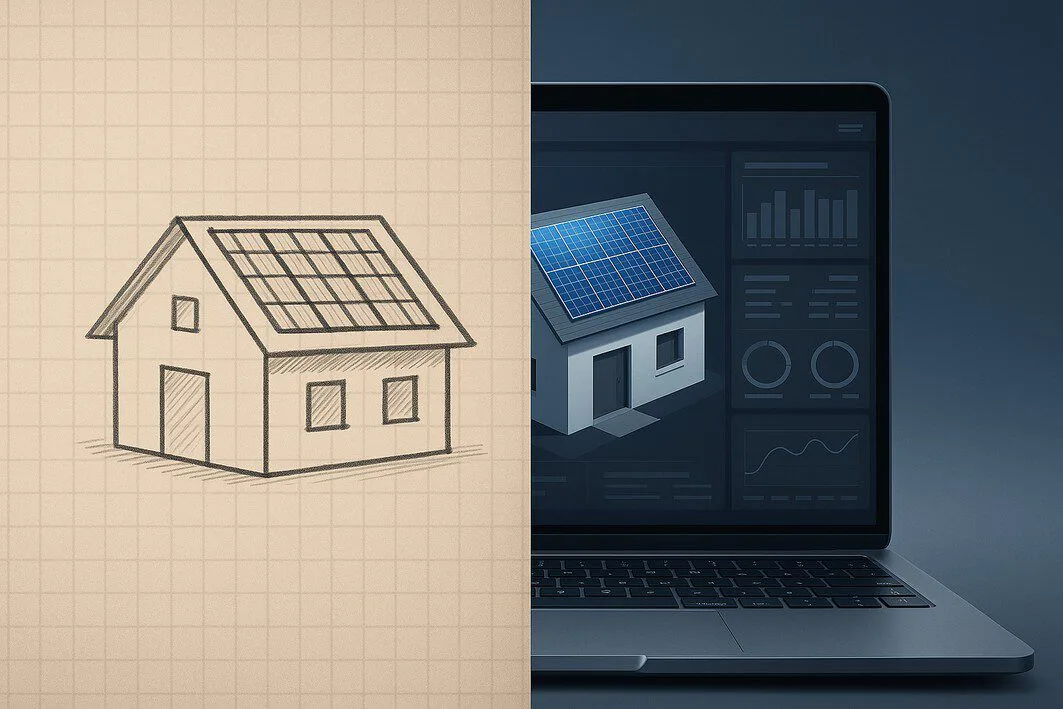
While rules of thumb provide a basic framework, they can’t predict the exact performance of your unique residential solar solution. Your home’s specific characteristics all create a unique energy production profile:
- Specific orientation
- Roof angle
- Local weather patterns
- Potential shading
This is where a detailed analysis becomes essential. To truly understand your potential savings and system payback period, you need data tailored to your home. At RenewGenius, we empower homeowners to make confident decisions by providing tools that go beyond generalizations. Using an ROI calculator, for example, allows you to input your specific details and see a much more accurate forecast of your solar investment’s performance.
Understanding how orientation and tilt affect efficiency is crucial, but it’s just one piece of the puzzle. The performance of your system also depends heavily on the quality and type of its components. Exploring the different solar panels, inverters, and mounting hardware is an essential next step in designing a system that maximizes your energy production.
Making an Informed Solar Decision
So, what is the 33% rule in solar panels? It’s a valuable, easy-to-remember guideline for understanding the significant impact of panel orientation on energy production. However, it’s a starting point, not the final word.
Even if your roof isn’t perfectly south-facing, a solar installation can still be an excellent financial and environmental investment. The key is to work with experts who can provide precise, data-driven projections for your specific situation, ensuring you get a system designed for maximum efficiency and value.

